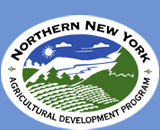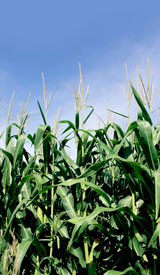March 3, 2009
Contacts: NNY Maple Specialist/Uihlein Maple Forest Director Michael
Farrell, 518-523-9337
Producers: Steven Rider, Sugarwood Hill Maple of Worth, NY, 315-771-7187
Jennifer Parker, Parker’s Maple, West Chazy, 518-420-4498
Perry Babcock, Alex Barrett, Northwood School, Lake Placid, 518-524-3358
Steve Vandermark, Cornell Cooperative Ext. of St. Lawrence County,
315-379-9586
Kevin O’Neill, Howard G. Sackett Tech. Education Center, Glenfield,
315-778-8076
Rolland Thomas, Alder Brook Maple, Dickinson, 518-529-7181
NNY Agricultural Development Info Online for Maple Producers;
Industry Could Grow to $9 Million
Maple is a strong agricultural sector for New York’s six northernmost
counties (Jefferson, Lewis, St. Lawrence, Clinton, Essex, and Franklin).
To help the region’s 347 producers make, market, and sell their maple
syrup, sugarcakes and other value-added confections, the Northern New
York Agricultural Development Program has added results of an early
tapping research project, a study of the growth potential of the NNY
maple industry, and a series of Cornell Maple Bulletins to its website
at www.nnyagdev.org.
Northern New York Maple Specialist and Uihlein Maple Forest Director
Michael Farrell has recently completed a study measuring Northern New
York’s potential to grow its maple industry. Farrell says, “Northern New
York has a vast resource of maple trees that could be tapped to fill
growing markets’ demand for pure maple syrup. We currently tap only one
in 200 trees whereas our neighbors in Vermont tap about one in every 50.
Over time, if we were to tap the same percentage of trees in New York as
they do in Vermont, we could grow the Northern New York maple industry
to more than $9 million annually. This figure is based on a price of $3
per pound for bulk syrup, which is a very conservative estimate. If we
figure in retail syrup sales, value-added confections, and agritourism
events such as Maple Weekend, the economic impact would be much
greater.”
According to the 2007 Census of Agriculture, the Northern New York
region currently has 347 farms producing 84,177 gallons of maple syrup
from 502,684 taps.
The farmer-led Northern New York Agricultural Development Program has
funded research to help producers increase sap yields and improve the
health of their sugar maple forests. The first-year report for the
Northern New York maple early tapping project that is testing
opportunities for producers to adapt to climate warming trends is now
online at www.nnyagdev.org. Cornell University Maple Program Director
Brian F. Chabot says, “Climate projection models suggest that the sap
season with the freeze-thaw conditions needed to make sap run will
continue to advance earlier in the year.”
Farrell says, “The decision on when to tap is critical. If one taps too
early, tapholes dry up prematurely causing producers to miss the later
season sap run. However, in years when warmer temperatures arrive
earlier, delaying tapping to late February/early March could result in
producers missing the opportunity to gain yield and income.”
Cornell researchers and NNY maple producers are tapping trees at several
intervals at Uihlein Maple Forest near Lake Placid and at
privately-owned sugarbushes in late fall and early winter to record sap
flow, volume and sugar concentration. The early conclusions based on one
year’s worth of early taps made in 2008 are now online at
www.nnyagdev.org. Farrell says, “One year of data is not sufficient to
make strong recommendations. We will be continuing this project for
several years to develop better guidelines on when to start tapping.”
When pressed, he says, “Maple producers are always eager to learn and
try new things. For those interested in early tapping at low elevations
and in New York’s warmer climate areas, we suggest tapping in January as
soon as long-range forecast indicates there will be at least two to
three days of sap flow. This could potentially increase overall yield.
However, every year is different. We did not have a January thaw in 2009
and there was no sap flow in February.”
Farrell notes, “Even though there may be some sap flow in January and
February in the colder and higher elevation areas of New York, it may
make sense to wait until late February or March to start tapping to
ensure that tapholes will be as fresh as possible for the major sap run
in April.”
Chabot and Farrell say results from research in future years will depend
on weather patterns to provide additional sufficient data to support
early tapping recommendations. In the meantime, producers will find
Cornell Maple Bulletins and resources for making maple syrup and
value-added confections on the Northern New York Agricultural
Development Program website at www.nnyagdev.org. #



